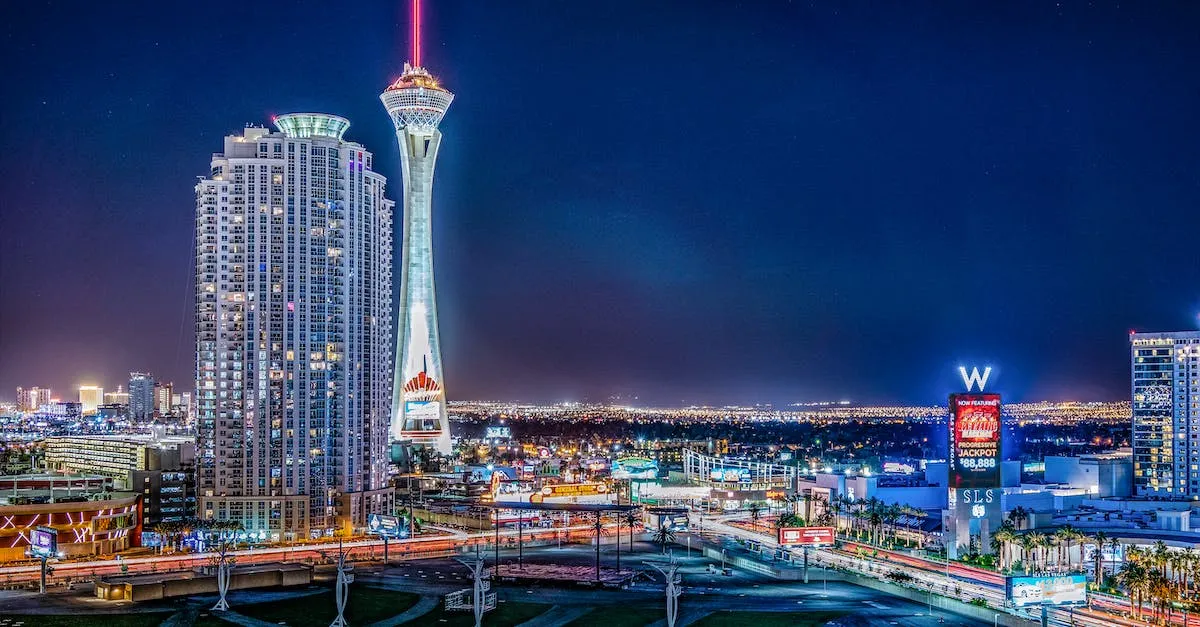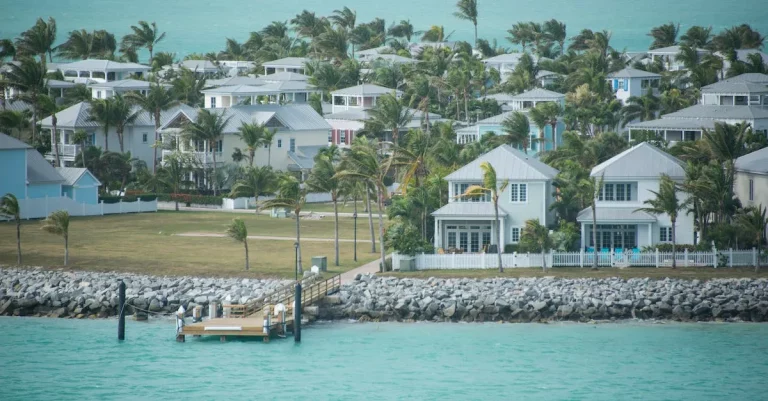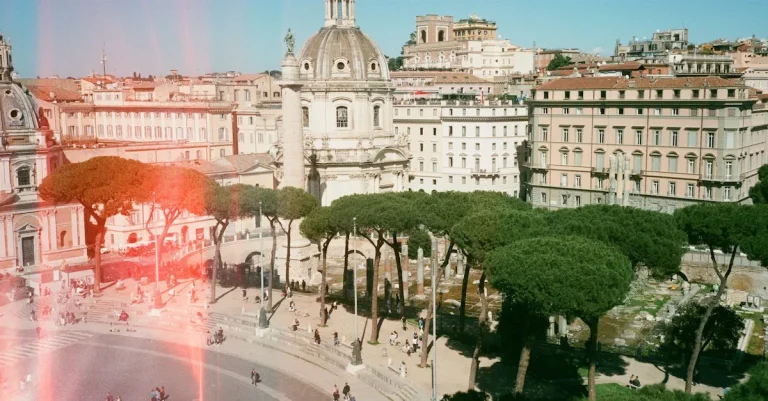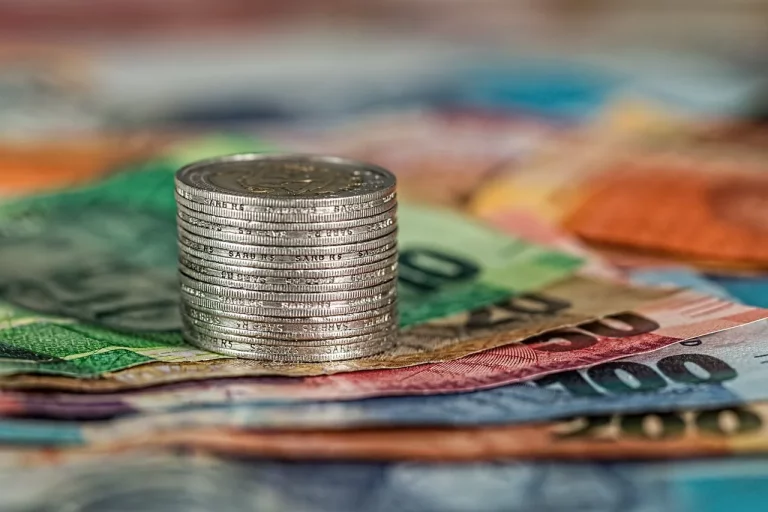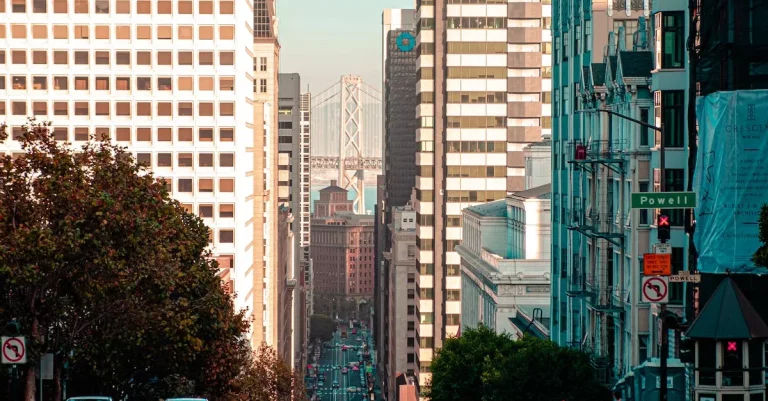Why Is Las Vegas Called Sin City? An In-Depth Look At The History Behind The Nickname
Bright lights, casinos, and endless nightlife—Las Vegas is famous for being the ultimate playground for adults. But where did Sin City get its provocative nickname from? If you’ve ever wondered why Las Vegas is called Sin City, you’re not alone.
If you’re short on time, here’s a quick answer: Las Vegas earned the Sin City moniker starting in the late 1940s due to its reputation for gambling, prostitution, and embracing vice activities. The name stuck as the city continued growing as a gambling and entertainment hotspot.
In this comprehensive guide, we’ll explore the full history behind Las Vegas’s Sin City nickname. We’ll look at the city’s early roots and reputation for vice. We’ll examine when the nickname first came into usage and who helped popularize it. And we’ll see how Las Vegas later embraced the Sin City label, cementing its status as a playground for adult entertainment and gambling unlike anywhere else in the world.
Las Vegas Developed a Reputation for Vice Starting in the Early 20th Century
Las Vegas, often referred to as Sin City, earned its notorious nickname due to its longstanding association with vice and debauchery. The city’s reputation for indulgence can be traced back to the early 20th century when it began to establish itself as a destination for those seeking excitement and entertainment.
Early gambling dens and saloons
One of the key factors contributing to Las Vegas’ reputation as Sin City was the proliferation of gambling dens and saloons in the early years. These establishments offered a wide range of games of chance, attracting not only local residents but also visitors from neighboring states.
The allure of easy money and the excitement of the gaming tables quickly became synonymous with the city.
In fact, Las Vegas was home to the first legalized casino in the United States. In 1931, the state of Nevada legalized gambling, and Las Vegas wasted no time in capitalizing on this new opportunity. The opening of the Northern Club casino set the stage for the rapid growth of the gambling industry in the city, setting it on a path to become the gambling capital of the world.
Prostitution was legal and prevalent
Another factor that contributed to Las Vegas’ sinful reputation was the legalization of prostitution. From the early 20th century until 1951, prostitution was legal and regulated in the city. This attracted individuals seeking illicit activities and added to the city’s overall image of vice and debauchery.
Prostitutes operated openly in brothels and were a common sight along the streets of Las Vegas. The presence of legal brothels added to the city’s reputation as a place where one could indulge in all manner of vices without fear of legal repercussions.
The city didn’t outlaw gambling until 1909
Despite its association with gambling and vice, it may come as a surprise that Las Vegas did not outlaw gambling until 1909. Prior to this, gambling was allowed, but it was not until the state of Nevada decided to impose tighter regulations on the industry that Las Vegas began to transform into the gambling mecca it is known as today.
After the outlawing of gambling, the city experienced a decline in its reputation as a destination for vice. However, this was short-lived. In 1931, the state of Nevada once again legalized gambling, and Las Vegas seized the opportunity to reinvent itself as an entertainment capital, embracing the sinful image that would shape its identity.
Today, Las Vegas continues to embrace its reputation as Sin City, offering visitors a wide range of entertainment options that cater to all kinds of vices. From world-class casinos to lavish nightclubs and adult-themed shows, Las Vegas remains a place where indulgence knows no bounds.
For further information on the history of Las Vegas and its association with vice, you can visit Las Vegas Convention and Visitors Authority.
The ‘Sin City’ Nickname Emerged in the Late 1940s
Las Vegas, often referred to as “Sin City,” earned its notorious nickname in the late 1940s. During this time, the city experienced a surge in popularity as a hub for entertainment, gambling, and adult-oriented activities.
Used by journalists to refer to the city’s anything-goes atmosphere
The term “Sin City” was initially popularized by journalists who were captivated by the city’s unique atmosphere. Las Vegas, with its luxurious casinos, showgirls, and vibrant nightlife, was seen as a place where people could indulge in their wildest desires without judgment or restraint.
Journalists used the term “Sin City” as a way to describe the city’s anything-goes attitude and to emphasize its reputation as a mecca for indulgence and vice. The phrase quickly caught on and became synonymous with Las Vegas.
The city’s reputation for indulgence was further perpetuated by popular culture, with movies like “Casino” and “Ocean’s Eleven” portraying Las Vegas as a playground for the morally ambiguous.
Helped cement the city’s bad boy image
The nickname “Sin City” helped cement Las Vegas’s reputation as a place where rules were more relaxed and vices were readily available. It added to the allure of the city, attracting visitors who were seeking an escape from the constraints of their everyday lives.
Over the years, Las Vegas has embraced its “Sin City” moniker, using it in marketing campaigns and adopting a tongue-in-cheek approach to its reputation. The city has capitalized on its image, promoting a sense of excitement and adventure that can be found nowhere else.
It is important to note that while Las Vegas may have earned its reputation as “Sin City,” it also offers a wide range of family-friendly attractions and activities. From world-class entertainment and dining to outdoor adventures and cultural experiences, there is something for everyone in this vibrant city.
To learn more about the history of Las Vegas and its nickname “Sin City,” you can visit LasVegas.com, the official website of the Las Vegas Convention and Visitors Authority.
The Rat Pack and Pop Culture Spread the Nickname Nationwide
One of the key factors that contributed to Las Vegas earning the moniker “Sin City” was the influence of the legendary Rat Pack. Led by Frank Sinatra, this group of talented performers including Dean Martin, Sammy Davis Jr., Joey Bishop, and Peter Lawford, regularly performed in Las Vegas during the 1950s and 1960s.
Frank Sinatra and his Rat Pack performed in Vegas often
Frank Sinatra, known as the Chairman of the Board, had a strong connection to Las Vegas. He first performed in the city in the 1950s and fell in love with its vibrant atmosphere. Sinatra would go on to become a regular headliner at the Sands Hotel and Casino, captivating audiences with his smooth vocals and charismatic stage presence.
His performances drew large crowds of adoring fans from all over the country, establishing Las Vegas as a premier entertainment destination. Sinatra and his Rat Pack pals would often engage in impromptu jam sessions and after-hours parties, which only added to the allure of the city.
Their antics brought notoriety to the city
The Rat Pack’s off-stage antics and reputation for living life to the fullest played a significant role in popularizing the nickname “Sin City.” They were known for their partying, gambling, and association with the glamorous and sometimes illicit aspects of Las Vegas nightlife.
The group’s wild escapades and larger-than-life personalities captured the imagination of the public, and the media couldn’t get enough of their exploits. Their presence in Las Vegas helped cement the city’s image as a place where anything goes, where rules could be bent, and where indulgence was the order of the day.
Hollywood films like Oceans 11 referenced Sin City
Another factor that contributed to the spread of the “Sin City” nickname was the influence of Hollywood films. One notable example is the original 1960 film “Ocean’s 11,” starring members of the Rat Pack.
The movie showcased Las Vegas as a glamorous and exciting city filled with casinos, showgirls, and high-stakes heists.
These films not only entertained audiences but also perpetuated the notion that Las Vegas was a city associated with vice and indulgence. The combination of the Rat Pack’s influence and Hollywood’s portrayal of Las Vegas further solidified the nickname “Sin City” in the public consciousness.
Even though the nickname may have originated as a tongue-in-cheek reference to Las Vegas’ reputation for vice, it has become an enduring part of the city’s identity. Today, visitors flock to Las Vegas to experience the excitement, entertainment, and yes, a little bit of sin that the city has to offer.
Las Vegas Eventually Embraced the Moniker
Despite its initial negative connotation, Las Vegas eventually embraced the nickname “Sin City” as part of its identity and brand. The city recognized the draw of its unique reputation and decided to capitalize on it.
Rather than trying to distance itself from the nickname, Las Vegas leaned into it, using it as a way to attract tourists and revenue.
Sin City became part of the city’s identity and brand
Over time, Las Vegas began to embrace the nickname “Sin City” as part of its identity and brand. The city understood that the allure of vice and indulgence was a major attraction for visitors. It became a place where people could let loose and escape from their everyday lives.
From the bright lights and bustling casinos to the extravagant shows and adult entertainment, Las Vegas became known as a city where anything goes and inhibitions are left at the door.
This acceptance of the “Sin City” nickname allowed Las Vegas to market itself as a destination for those seeking excitement and entertainment. The city’s slogan, “What happens in Vegas, stays in Vegas,” further reinforced the idea that Las Vegas was a place where people could indulge in activities that might be considered sinful or taboo elsewhere.
Casinos used the nickname in marketing campaigns
The casinos in Las Vegas played a significant role in popularizing the nickname “Sin City.” They recognized that embracing the reputation of being a sinful destination would attract more visitors and increase their profits.
Many casinos incorporated the nickname into their marketing campaigns, using catchy slogans and advertisements to entice people to come and experience the excitement and debauchery that Las Vegas had to offer.
By associating themselves with the “Sin City” nickname, casinos created an image of a place where people could come to let loose, gamble, and enjoy all kinds of adult entertainment. This marketing strategy proved to be highly successful, as people from all over the world flocked to Las Vegas to experience the thrill and indulgence that the city had become known for.
Las Vegas’ decision to embrace the nickname “Sin City” has had a lasting impact on its reputation and tourism industry. Today, the city continues to be a top destination for those seeking a wild and unforgettable experience.
Today, Sin City Remains a Unique Adult Playground
Las Vegas, famously known as Sin City, continues to live up to its nickname as a unique adult playground. The city’s reputation as a destination for vice and excess has solidified over the years, attracting millions of visitors from around the world who seek entertainment, gambling, and indulgence.
Nickname reflects the city’s embrace of vice and excess
The moniker “Sin City” perfectly captures the essence of Las Vegas and its reputation for embracing vices that are generally frowned upon in other cities. From the moment one enters the Las Vegas Strip, they are greeted by a vibrant and lively atmosphere that caters to indulgence and hedonism.
The city’s numerous casinos, nightclubs, and adult-themed entertainment establishments offer visitors a chance to let loose and enjoy a level of freedom not found in many other places.
The nickname “Sin City” also reflects the city’s notorious history of organized crime, which was prevalent in the mid-20th century. During this time, Las Vegas became a hub for illegal activities, with mobsters and gangsters establishing their presence in the city.
While the influence of organized crime has significantly diminished in recent decades, the nickname serves as a reminder of the city’s colorful past.
Billboards and travel guides reference Sin City
When you visit Las Vegas, it’s hard to miss the references to its notorious nickname. Billboards along the Strip proudly display phrases like “What happens in Vegas, stays in Vegas” and “Welcome to Sin City.”
These catchy slogans serve as a playful reminder of the city’s reputation and entice visitors to let go of their inhibitions.
Travel guides and websites also frequently refer to Las Vegas as Sin City, showcasing the city’s unique appeal to those looking for a wild and unforgettable experience. They highlight the city’s vibrant nightlife, world-class entertainment, and the sheer variety of activities that cater to a more adult-oriented crowd.
This marketing strategy has been successful in attracting tourists seeking a party atmosphere and a break from their everyday lives.
Conclusion
Las Vegas proudly bears the Sin City nickname today, but the moniker emerged from the city’s early reputation for embracing vice. Starting as a remote desert town known for saloons and gambling halls, Las Vegas saw its anything-goes image solidified by journalists in the 1940s who depicted it as a destination where traditional rules didn’t apply.
This Sin City label was later cemented in pop culture and fully embraced by the city. Today, the nickname evokes Las Vegas’ one-of-a-kind status as an adult playground for gambling, nightlife, and entertainment excesses of all varieties.

